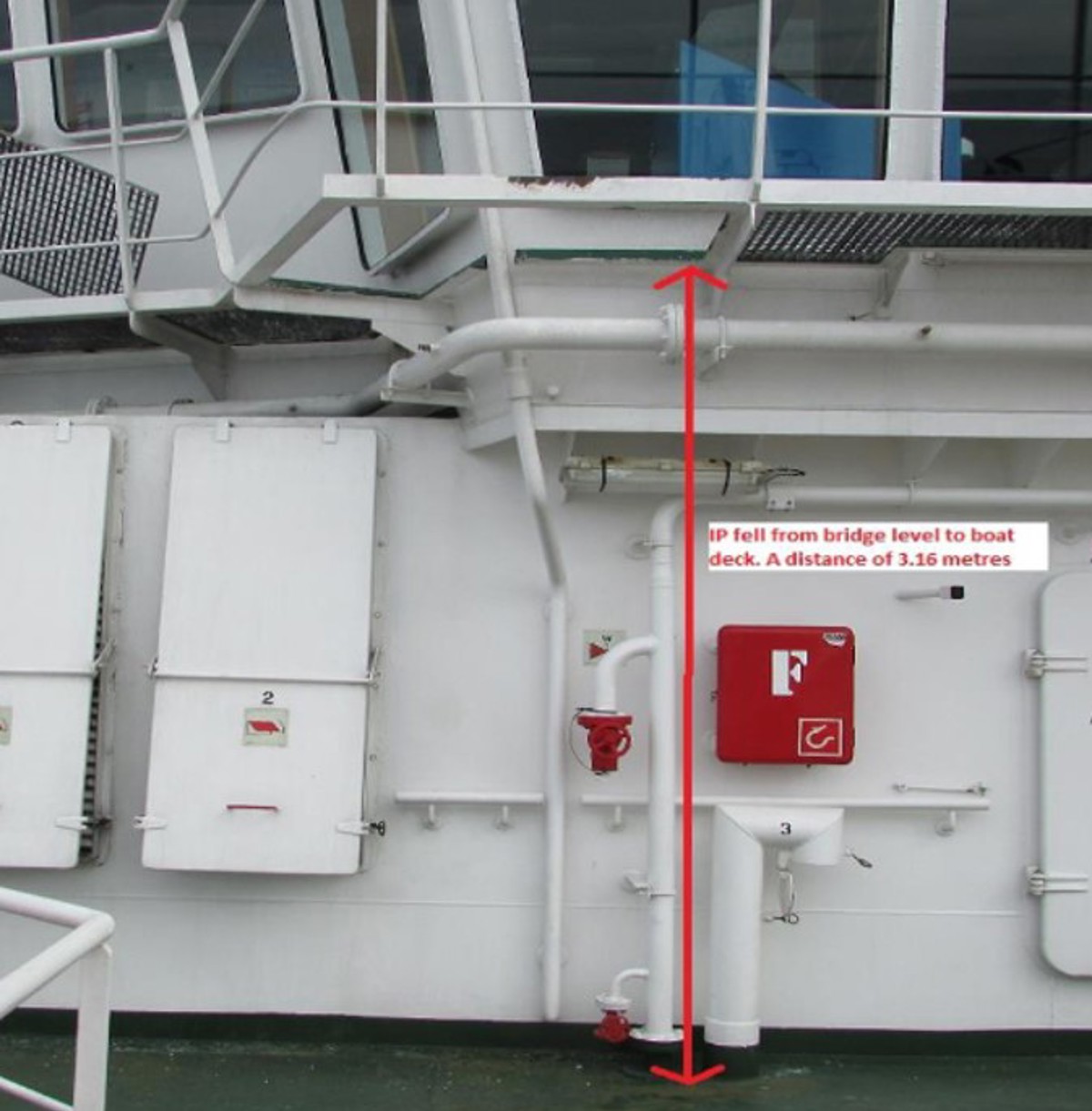MSF: LTI – Fall from Height (control of work during SIMOPS)
- Safety Flash
- Published on 28 February 2022
- Generated on 25 April 2025
- IMCA SF 05/22
- 3 minute read
Jump to:
The Marine Safety Forum published Safety Alert 21-18 relating to an incident where someone fell from the bridge deck to the deck below.
What happened?
Four crew in two teams were working on maintenance of the vessel superstructure. One of the teams was on the monkey island; the other, on the bridge level gantry, removing gratings and working on the steel frame of the gantry. When the team finished on the monkey island, they went down to the bridge level, and one of them removed his safety harness. He spotted an old paint drip that needed dealing with, and considered that a check around the bridge to finish off the job before break was a good use of time. During this task he found it necessary, owing to restricted space, to work moving backwards, not looking behind to see if there were any obstacles. He was aware of the other team working on the same level and that they had been working on gratings, but he did not check to confirm where exactly they were at this moment. Whilst working he took a step backwards and fell 3m through the opening left by the lifted section of grating down to the boat deck. The MSF’s member does not report what happened then but the incident was considered an LTI.

What went wrong/what was the cause?
- Control of Work and Permit to Work Systems weren’t correctly and effectively implemented on board.
- There was a lack of situational awareness and risk perception, a lack of awareness of SIMOPS, and inadequate communications between deck personnel in charge and deck crew.
- There were no barriers or signage in the area of the incident. A fall hazard was introduced by removing the bridge gantry gratings.
Actions
- More effective and thorough toolbox talks and pre-task risk assessment, particularly for non-routine tasks.
- More thorough approach to SIMOPS:
- During scope of work planning, identify any combined operations and any additional hazards introduced by the SIMOPS. Can SIMOPS be avoided, and tasks executed at different times?
- Assess the relevant level of risk associated with the SIMOPS.
- Are the planned control measures enough to keep things safe? If not, identify additional risk reduction measures and update the relevant risk assessments.
- Whatever happens, make sure a record is kept so the same mistake doesn’t happen again – provide input to the Permit to Work / Control of Work process and “embed” any changes identified.
Members may wish to refer to:
IMCA M 203 Guidance on simultaneous operations (SIMOPS)
Related Safety Flashes
-
IMCA SF 04/22
10 February 2022
-
-
IMCA SF 10/21
8 April 2021
-
-
IMCA SF 28/20
28 September 2020
-
IMCA Safety Flashes summarise key safety matters and incidents, allowing lessons to be more easily learnt for the benefit of the entire offshore industry.
The effectiveness of the IMCA Safety Flash system depends on the industry sharing information and so avoiding repeat incidents. Incidents are classified according to IOGP's Life Saving Rules.
All information is anonymised or sanitised, as appropriate, and warnings for graphic content included where possible.
IMCA makes every effort to ensure both the accuracy and reliability of the information shared, but is not be liable for any guidance and/or recommendation and/or statement herein contained.
The information contained in this document does not fulfil or replace any individual's or Member's legal, regulatory or other duties or obligations in respect of their operations. Individuals and Members remain solely responsible for the safe, lawful and proper conduct of their operations.
Share your safety incidents with IMCA online. Sign-up to receive Safety Flashes straight to your email.